Let’s focus today on France’s main contribution to the Normandy campaign: the 2e division blindée, more commonly known in France just as “the 2e DB“.
ORIGINS
The 2e DB can trace its History to one single man who refused to give up the fight in 1940, joined general de Gaulle in London and kept fighting the Germans with the Allies. That man was named Phillipe de Hauteclocque, but History has remembered him under his nom de guerre, Philippe Leclerc.
Leclerc’s saga starts during the Fall of France. A staff captain in the 4e division d’infanterie, he was captured but managed to escape, returned to French lines to fight again, was wounded and captured a second time, but escaped again from the hospital he was kept in. Then he proceeded to cross France from Champagne to the Spanish border, mostly on a bicycle, avoiding capture. From Spain, he went to London where he met general de Gaulle, the two of them instantly going along well.
De Gaulle promoted him to lieutenant colonel and gave him the mission to rally French Equatorial Africa to Free France. Changing his name to Leclerc to avoid retribution against his family in France, he set about his task. Landing with 20 men in Cameroon, in two weeks he delivered Chad & Gabon to Free France. De Gaulle promoted him once again and appointed him military commander of Chad.
BACK IN THE GAME
With Free France now having some territorial foundations, Leclerc prepared for the next step: bringing the fight back to the enemy. In January 1941, he led a strong column of 5.000 Tirailleurs, a few camel riders and one single 75mm howitzer through 400 km of desert considered impassable to vehicles. Guided by a British Long Range Desert Group patrol, the Colonne Leclerc hit the Italians in the back, from the desert, at the Kufra oasis. On March 1st, the Italian garrison of the El Ag fort surrendered, and the Free French flag was hoisted over it. There, Leclerc and his men swore an oath “never to lay down arms until our colors, our beautiful colors, float on the Strasbourg Cathedral“.
From there, Leclerc had hoped to strike North, through the Fezzan (Southern Libya) to join hands with the British on their way to Tunisia. But in 1941, the British were driven back the other way, with Rommel on their heels. Only in late 1942, with general Montgomery’s victory at El Alamein, will they be able to drive West again. In the meantime, Leclerc & de Gaulle worked at reorganizing and beefing up the FFL (Forces Françaises Libres, a.k.a Free French) forces, all the while harassing the enemy, especially the Italians. Forming four patrols of a dozen (South African) armored cars supported by light bombers, Leclerc unleashed them in the desert: they fought a “pirate war”, navigating the dunes and striking convoys, isolated posts, supply depots, … not unlike privateers on the ocean back in the age of sails.
In December 1942, the Colonne Leclerc, over 5.000 strong, sets again in the desert for a 1500 km journey, carrying all their food, water and gas with them. Two weeks later, the whole Fezzan was in their hand and Leclerc finally met with general Montgomery at Tripoli on January 26th, 1943. Now advancing with the British as Force L, they attacked the Mareth line and entered Tunisia, then a French colony.
THE FIRST AMALGAM
Briefly renamed 2e division française libre, Leclerc’s command was rebranded 2e division blindée on August 23rd, 1943, and moved to Morocco to be reorganized and equipped as an armored unit. By then, most of Leclerc’s Chadian soldiers, after two years of campaigns, have been sent back home. They were replaced with escapees from France, some Free French who had been fighting with the British Eighth Army since 1941, North African soldiers, foreign volunteers (especially Republican Spaniards) but mostly former Vichy units.
The 2e division blindée was a unique case of blending elements from the two almost antagonist French armies into a single unit. And it didn’t go without troubles! At first, the men from the 501e Régiment de Chars de Combat (FFL) tank regiment only referred to their brothers in arms from 12e Régiment de Chasseurs d’Afrique (Vichy) as “Nazis”, while members from the reconnaissance 1er Régiment de Marche de Spahis Marocains (FFL) were called “Thugs” by their opposites for their lack of discipline. The Spaniards gathered into the Régiment de Marche du Tchad‘s 9th company (a.k.a “La Nueve“), most of them anti-fascists or anarchists, refused to serve under a Vichy officer and would only obey an FFL one. Fist fights in bars between FFL & Vichy French on leave were commonplace. But Leclerc was dedicated to making his division into a symbol of national unity, focused on one single goal: the liberation of metropolitan France. And despite the hardships, he finally succeeded, sometimes by threatening his fellow Free French to leave them out of the Liberation if they didn’t get off their high horses …
Unlike the other traditional FFL units, which had fought with the British Eighth Army and retained British equipment, the 2e DB was to be equipped by the USA and organized as an American armored division. Yet, some changes were brought, such as the AA guns being used as portee, mounted on GMC truck, the way they were used in Jock Columns by the desert war’s veterans. Although they did not use BAR automatic rifles, Leclerc’s men were able to get, scrounge or “acquire” a great number of extra M1 Carbine (or Carabine US), a favorite weapon among the Frenchmen. An organic TD battalion, the Régiment Blindé de Fusiliers Marins manned by Navy personnel retaining their trademark hats, was added to the division TO&E.
NORMANDY
On April 7th, 1944, the division was reviewed by general de Gaulle then shipped to England. There, the 2e DB resumed its training and collected some modern equipment, although still lacking many items it was supposed to get, such as most 76mm Shermans and many bazookas.
The Frenchmen were ready and eager to bring the fight back on French soil … yet Operation Overlord was initiated without them nor even de Gaulle being informed. For almost two months, the 2e DB champed at the bit in England, only sailing for France on July 29th and landing at Utah Beach on July 31st. For some of them, the exile had last for four long years, taking them from Norway to England via Chad & Tunisia!
As soon as the 2e DB had landed and regrouped, it was incorporated within general Haislip’s US XVth Corps, itself part of general Patton’s Third Army. Alongside the US 5th Armored and 79th & 90th Infantry Divisions, it was to follow up on Operation Cobra to break through the German front and out of bocage country to finally revive a more mobile type of armored warfare.Having learned his lessons from 1940 and the desert war, Leclerc used speed and maneuvers (including by misappropriating roads reserved for his American counterparts) over direct confrontation whenever he could to keep the Germans always off-balance. Its direct opponent, the German 9. Panzerdivision, brought from Southern France to secure that flank of the front, would never be able to gather its full force and mount an effective defensive line, being always outflanked or even bypassed by the 2e DB.
While the German armies in Normandy were in full retreat, a first opportunity to close the pocket on them was lost to the 2e DB on August 13th, at Argentan, but one of his battlegroups took part in the final closing of the Falaise pocket one week later.
LIBERATION OF PARIS
Transferred to the US First Army while Patton was being sent to Britanny, the 2e DB resumed its drive East, with now only one goal in mind: liberating Paris. For Leclerc has learned that the capital city’s population had risen against the Germans and that it could be crushed anytime.
On August 23rd, Leclerc, with de Gaulle’s backing, managed to convince his American superiors to let him drive to Paris, and the next day the whole division was on the move. Speed being of the essence, the 2e DB raced in two columns, smashing through any defensive position frontally, without consideration for losses. Casualties were high, especially among the Spahis who opened the way.
Late on August 24th, still outside of Paris, Leclerc ordered captain Dronne, commander of the Nueve to keep driving with a platoon of his men and three tanks and sneak his way to the city before nightfall. Dronne & his small column were, therefore, the first Allied troops to reach Paris’ city hall on that same evening, galvanizing the Parisian insurgents and convincing the Germans that the Allies were already entering the city in full force.
The next day, the bulk of the 2e DB & US 4th Infantry Division entered the city, cleaning the remaining German pockets of resistance and forcing the German governor von Choltitz to capitulate.
AFTER PARIS
The 2e DB was one of the few Allied division which had no problem replacing its losses. In each village, there were volunteers to enlist with Leclerc, and from Paris, several new companies were created and added to the division.
The division left Paris in early September, heading East. On September 13th, with the help from American P-47, it crushed the 112. Panzerbrigade near Dompaire, then managed to bypass the German defensive lines along the Vosges mountains right under the nose of the enemy to, finally, liberate Strasbourg on November 23rd, 1944. It was the fulfillment of the Kufra oath, made three years before.
In January-February 1945, the division took part in the heavy fightings for the Colmar pocket, then was sent to Bavaria. Once again, it raced for a prize: Berchtesgaden and Hitler’s Berghof (his house) & Kehlsteinhaus (the “Eagle’s Nest”). Unlike depicted in Band of Brothers, it was the US 3rd Infantry Division which entered Berchtesgaden first, with elements of the 2e DB with them. Since the Americans stopped there, the Free French (and as often, some Spaniards among them) kept driving and seized the Berghof. As for the Eagle’s Nest, a few Frenchmen climbed there, hoisted a French flag, but were later ousted by the 101st Airborne Division when it got there too.
Immediately after VE-Day, the 2e DB was earmarked for redeployment in Asia, to liberate French Indochina from the Japanese. But Japan surrendered while the troops were still on their way, and Leclerc represented France during the signing of its capitulation aboard USS Missouri, on September 2nd.
When the 2e DB finally landed in Indochina on October 15th, it was not to liberate a French territory from Japanese invaders but to quell an anti-colonial uprising against French rule. For many Free French who had fled France or joined the Resistance to fight and liberate their country from the German occupiers, the bitter irony of their reverse situation wasn’t lost. After a short period of fighting with the nationalists (not yet called Vietminh), an armistice was signed in February 1946. It was to be only the prelude to the Indochina War.Shortly after the armistice, on March 1946, the 2e DB was disbanded. Yet one year and a half later, veterans and vehicles from the division, gathered one last time, will escort to his resting place the body of general Leclerc, killed in an airplane crash.
THE 2e DIVISION BLINDEE INGAME
The 2e DB gives everything and more than any other division in Phase A, trying to keep its opponent under pressure and off-footing as long as possible, for it will be technically outclassed in the later phases.
The Free French rely mostly on their elite recon troops, the veterans Spahis sporting their trademark scarlet cap, coming in a wider array of vehicles, from mere jeep to Stuart.
With the vanguard of the division also come the veteran Republican Spaniards from the Nueve, fighting fascists even before it was cool (1936!), scores of Stuart tanks and even GMC Bofors AA guns in portee mode. The Navy RBFM, not to be outdone, provides AM-M8 (French designation for the Greyhound) in a fire support role and even a couple of advanced TD M10A1.
In phase B & C, the division receives heavier equipment with Chars M4A2 & M4A3, yet mostly 75mm-armed ones, the M10 remaining the best way to deal with enemy tanks. Mechanized infantry, in the form of Voltigeurs, is also available in greater numbers but lack the squad bazooka from their American counterparts, this weapon being restricted to a few specialized units.
The FAFL (Free French Air Force) provides air cover with a mixture of American and British planes, mostly Spitfire, Lightning & DB-73, the latter being also used in their D-Day role as smoke-layers.

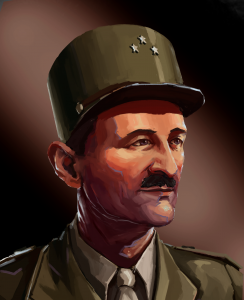
![koufra16[1]](https://eugensystems.com/wp-content/uploads/2017/04/koufra161.jpg)
![16[1]](https://eugensystems.com/wp-content/uploads/2017/04/161.gif)
![rbfm_410[1]](https://eugensystems.com/wp-content/uploads/2017/04/rbfm_4101.jpg)
![leclerc6[1]](https://eugensystems.com/wp-content/uploads/2017/04/leclerc61-290x300.jpg)
![mapXI[1]](https://eugensystems.com/wp-content/uploads/2017/04/mapXI1-1024x502.jpg)
![2dbitinerairexl-2b4ce[1]](https://eugensystems.com/wp-content/uploads/2017/04/2dbitinerairexl-2b4ce1.jpg)
![imagen-sin-titulo[1]](https://eugensystems.com/wp-content/uploads/2017/04/imagen-sin-titulo1-283x300.jpg)
![1945_Japanese-surrender[1]](https://eugensystems.com/wp-content/uploads/2017/04/1945_Japanese-surrender1-300x214.jpg)

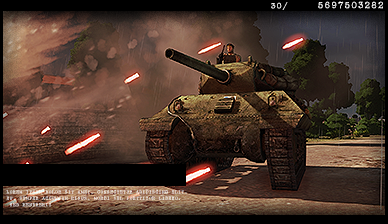
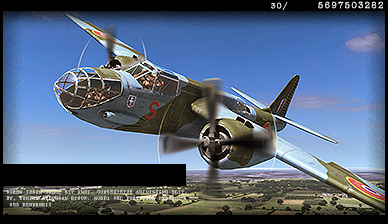

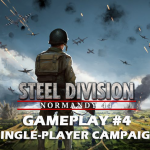
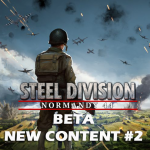
Matt
April 27, 2017 at 9:53 pmAprés le Tchad, l’Angleterre et la France
Le grand chemin qui mene vers Paris
Le coeur joyeux tout gonflé d’espérance
Ils ont suivi la gloire qui les conduits.
https://www.youtube.com/watch?v=KW0iCxTiAR8
Spawnfarkal
April 28, 2017 at 5:45 am…a smoke-laying bomber!? Never learn from mistakes? 😉
Vlad
April 28, 2017 at 7:35 am“How! We lost the war to France as well?”
Wilhelm Keitel
Jeroen
April 29, 2017 at 11:41 pmNice update! A history that deserves some freshing up, just like the mention of the Spanish. Republicans and Anarchist’s fought throughout the World War after Franco took control of Spain.
codepixel
May 1, 2017 at 7:00 pmWill we see some spanish republican flags on the nueve units?
Kothonis
May 2, 2017 at 4:07 pmDid anyone of you know why the code oft arms is this Orthodox like cross?
[EUG]MadMat
May 2, 2017 at 4:17 pmIt is the Cross of Lorraine, not the orthodox cross (it would be missing a bar):
https://en.wikipedia.org/wiki/Cross_of_Lorraine
Kothonis
May 2, 2017 at 4:43 pmok yeah that makes much more sense.I already wondered why there was no third bar 😀
Alexis
May 5, 2017 at 10:57 amTried it yesterday against the AI. Wow… I enjoyed it thoroughly. An outstanding work on historic features: la Nueve, los Spahis… A very interesting game. And finally, smoke screens proved useful. I long for discovering the 1st Polish Armored.